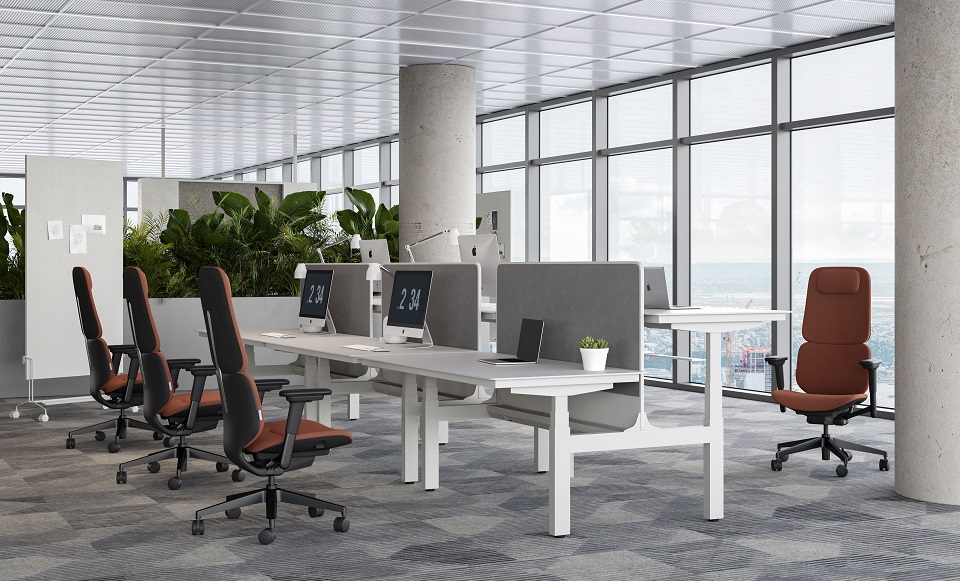
In today's fast-paced world, many of us spend a significant amount of time at work. Whether you're sitting at a desk or working on a production line, your workplace environment can have a significant impact on your health, well-being, and productivity. One important aspect of workplace design that can have a major impact on your health and well-being is ergonomics. In this blog post, we'll explore the importance of ergonomics in the workplace and why it's important for employers to prioritize ergonomic design.
Ergonomics is the study of how people interact with their environment and the tools and equipment they use. In the workplace, this means designing workspaces, tools, and equipment to fit the physical and mental capabilities of the worker. Ergonomics aims to reduce the risk of injury, discomfort, and stress caused by work-related activities.

The workplace can be a hazardous environment, with many potential risks to workers' health and safety. Poor ergonomics can exacerbate these risks, leading to physical and mental health problems, reduced productivity, and increased absenteeism. Here are some reasons why ergonomics is essential in the workplace:
Workplace injuries can have serious consequences for both employees and employers. Injuries can lead to lost work time, increased healthcare costs, decreased productivity, and legal liabilities. Ergonomics helps reduce the risk of workplace injuries by designing workspaces, tools, and equipment that minimize physical stress and strain on the body.
For example, ergonomic chairs can help reduce the risk of back pain and musculoskeletal disorders, while anti-fatigue mats can help prevent foot and leg fatigue for workers who spend long periods standing. Ergonomic tools and equipment, such as lifting aids and adjustable workstations, can also help reduce the risk of injuries caused by repetitive or awkward movements.
When workers are comfortable and not experiencing physical discomfort, they are more likely to be productive. Ergonomics can improve productivity by reducing the physical strain on workers, allowing them to focus on their tasks without distraction. Additionally, ergonomic design can reduce the number of errors and accidents that occur in the workplace, which can also increase productivity.
Poor ergonomics can have negative effects on workers' physical and mental health. For example, workers who spend long periods sitting in poorly designed chairs can experience back pain and other musculoskeletal disorders. Ergonomic chairs can help reduce the risk of these conditions, as well as other health problems, such as carpal tunnel syndrome and eye strain.
In addition to physical health benefits, ergonomic design can also improve workers' mental health and well-being. Workers who are comfortable and not experiencing physical discomfort are more likely to feel positive and engaged in their work, leading to improved job satisfaction and mental health.
Work-related injuries and illnesses can lead to absenteeism and turnover, which can be costly for employers. By prioritizing ergonomic design, employers can help reduce the risk of injuries and illnesses, leading to fewer absences and less turnover. This can help improve employee retention and reduce recruitment and training costs.

There are several elements of office ergonomic design that should be considered to promote employee health and well-being, reduce the risk of musculoskeletal disorders, and increase productivity. Some of the key elements include:
Choosing an ergonomic chair with adjustable seat height, backrest, and armrests is important to ensure proper posture and comfort while sitting.
The height of the desk should be adjustable so that it can accommodate employees of different heights. The standing desk should also have enough space for the computer, keyboard, and other office equipment.
The monitor should be at eye level and positioned at a comfortable distance from the employee to reduce eye strain and neck pain.
The keyboard and mouse should be positioned at a comfortable distance from the employee to prevent wrist and shoulder pain. Using an ergonomic keyboard and mouse can also help reduce the risk of repetitive strain injuries.
Proper lighting is important to prevent eye strain and headaches. The office should be well-lit, and employees should have the option to adjust the lighting as needed.
If employees cannot comfortably rest their feet on the floor while seated, a footrest can be used to reduce pressure on the lower back.
Encouraging employees to take breaks and move around can help prevent muscle stiffness and reduce the risk of injury.
Overall, creating an ergonomic workspace can help promote employee health, comfort, and productivity. Get your individual ergonomic office solution, just find WEWORTH.

Jun. 21, 2023

Jun. 20, 2023

Jun. 16, 2023

Jun. 15, 2023

Daniel Yao
Yose Lang